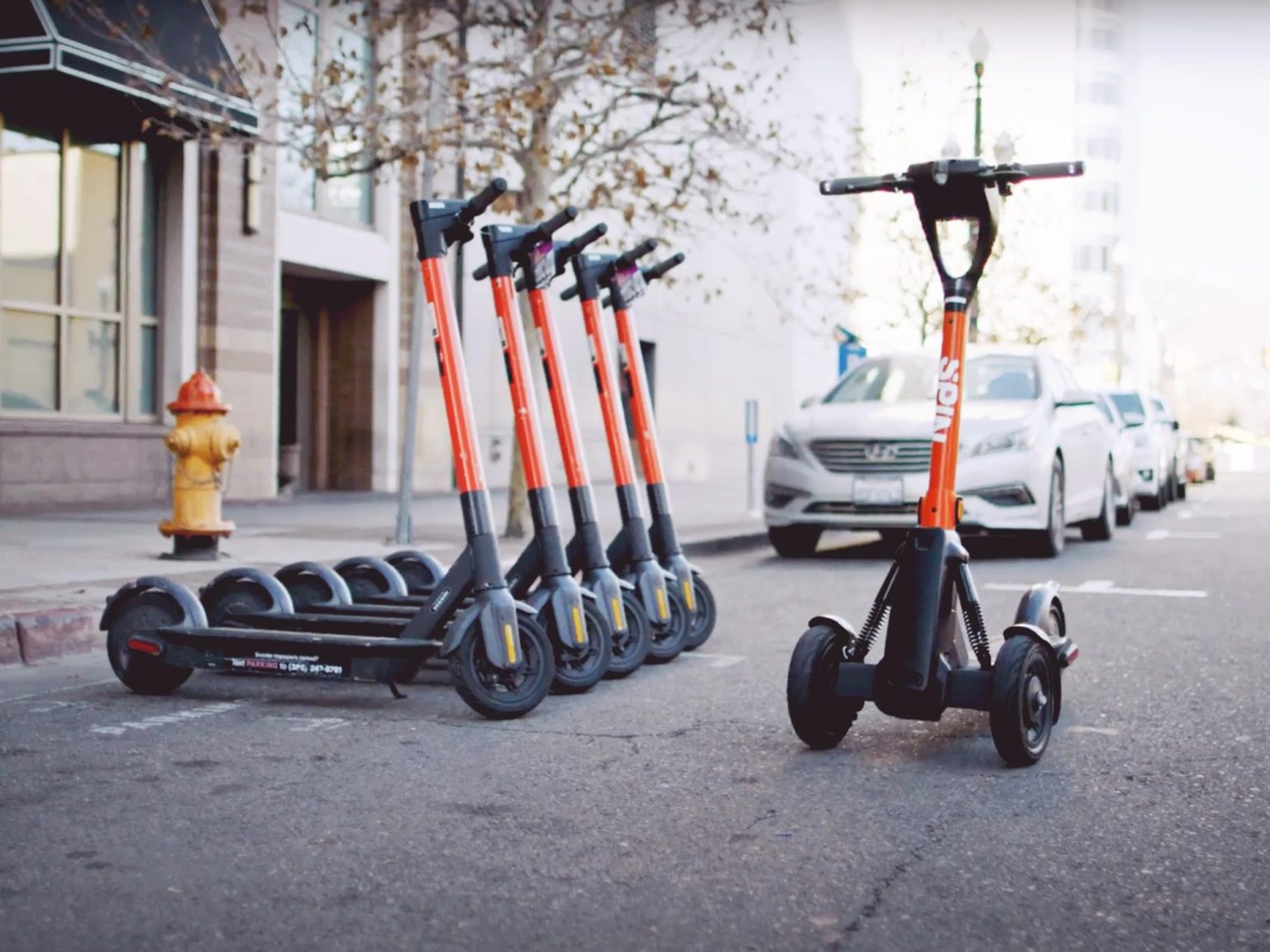Spin, a subsidiary of Ford Motor Company, has announced that it will bring remotely-operated e-scooters to cities in North American and Europe in 2021. These new e-scooters have one major benefit over the older variety: they can re-park themselves out of the pathway of pedestrians.
The new Spin S-200 that will be deployed is made possible because of a partnership with software company Tortoise. The new Tortoise Spin Valet platform make sit possible to remotely operate the e-scooters by combining front and rear-facing built-in cameras. According to a release, this technology will eventually make it possible for a rider to “hail” an e-scooter several blocks to a desired pick up location rather than going to find one.
Spin e-scooters will be deployed in Boise, Idaho this spring.Photo courtesy of Ford Motor Company
The first S-200 will deploy in Boise, Idaho this spring. The city will receive 300 of the models, which were co-developed with Segway-Ninebot and feature a three-wheeled setup. Spin says that the three-wheel setup can better withstand different road conditions due to its enhanced suspension. There are three independent braking systems on the e-scooter (regenerative rear brake, front and rear drum brakes) and turn signals (on handlebars and near the rear wheel).
“There has been a lot of fanfare around the potential of remote-controlled e-scooters, but this partnership marks a turning point in tangible operational plans to bring them to city streets,” said Ben Bear, Chief Business Officer at Spin. “In addition to providing reliability to consumers and more order to city streets, this could significantly improve unit economics, help reduce carbon emissions and the operational work required to maintain and reposition fleets.”
Back to that repositioning tech. Spin describes the process in which the maneuver occurs:
“After a ride is terminated by the individual riding the e-scooter, the remote operations team may reposition the scooter (at a low-speed – max 3 mph) if the vehicle is blocking the sidewalk, crosswalk, or a handicapped space. The same repositioning can take place if the vehicle is parked at a destination where it’s unlikely to get another trip. Later this year, Spin will offer in-app “scooter hailing” that allows customers to request an e-scooter in advance or in real-time. Operations staff will remotely direct any S-200 to the desired location. Eventually, battery depleted scooters will also automatically go to the nearest Spin Hub for charging.”
Over the next year, Spin will explore opportunities to bring S-200 to North American and European cities that are interested in remote-controlled operations and a more robust e-scooter model.
“We are thrilled to see our software come to life with Spin,” said Dmitry Shevelenko, Co-Founder and President at Tortoise. “Spin has worked tirelessly to build trust with cities around the world, and our hope is that this technology only further improves and optimizes the way cities and operators can provide transportation together.”
Co-developed by Spin and Segway-Ninebot, the S-200 is equipped with the latest computer vision, machine learning, and robotics technologies, featuring an advanced visual navigation system.
“Although this is a small step for Segway’s robotic technology to power Spin’s new generation of shared scooters, the S-200 for the first time,” said Tony Ho, Segway’s Vice President of Global Business Development, “we believe this is a significant development that marks the beginning of robotic technology that may unlock the full potential of micromobility, in practical and operational use. We look forward to seeing the real impact of the technology that this pilot program will bring.”








